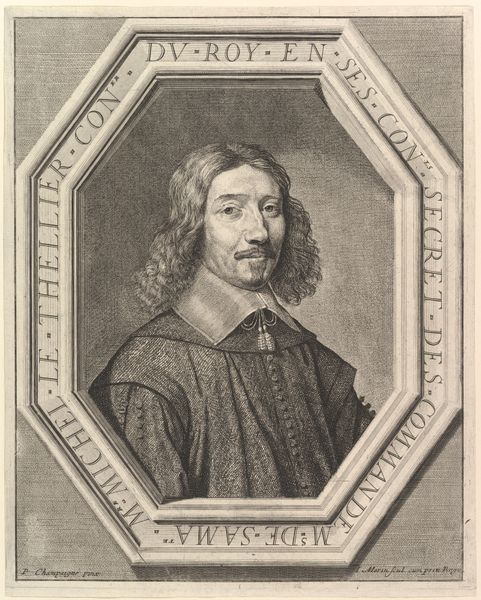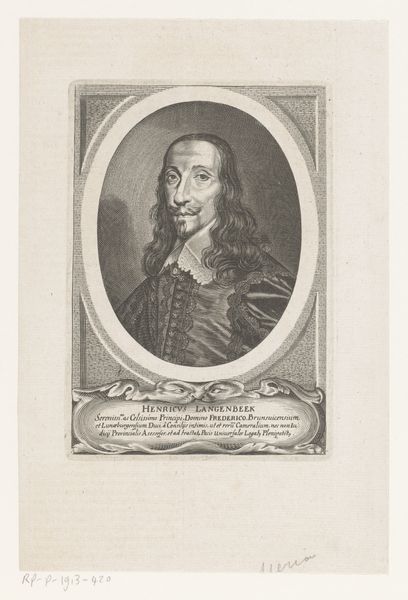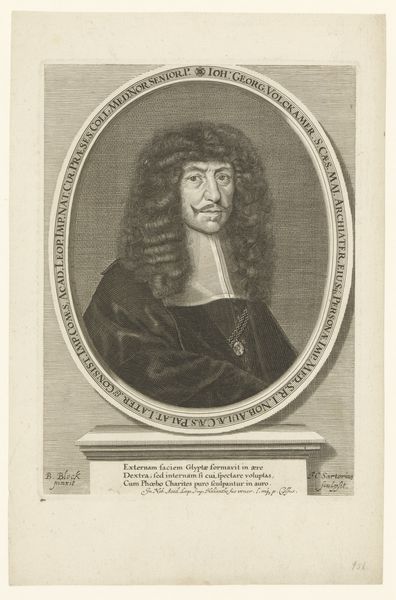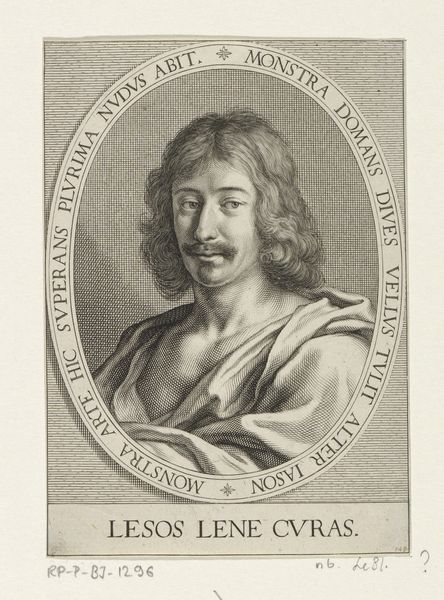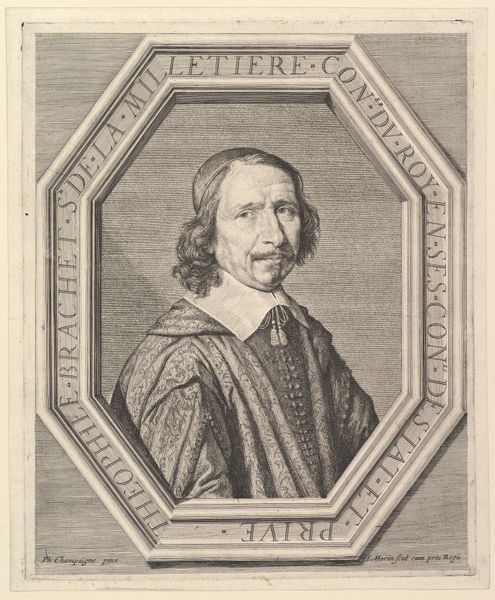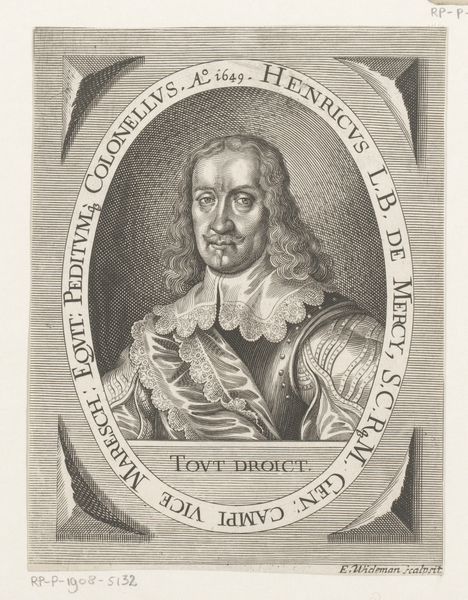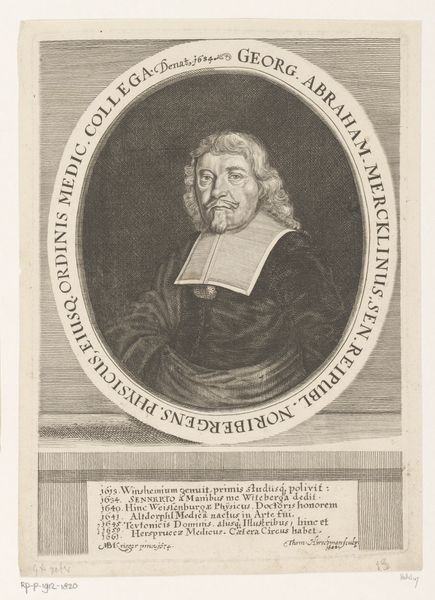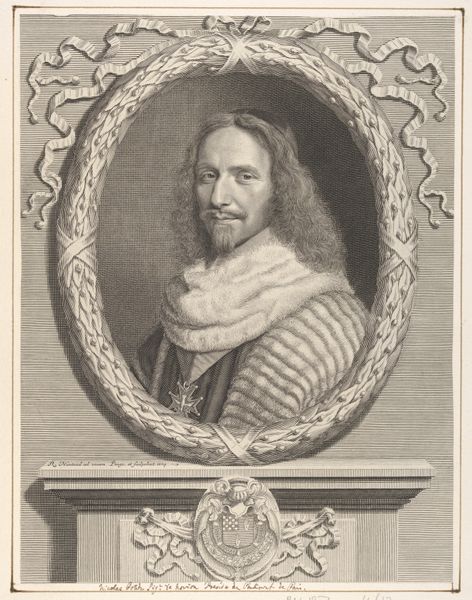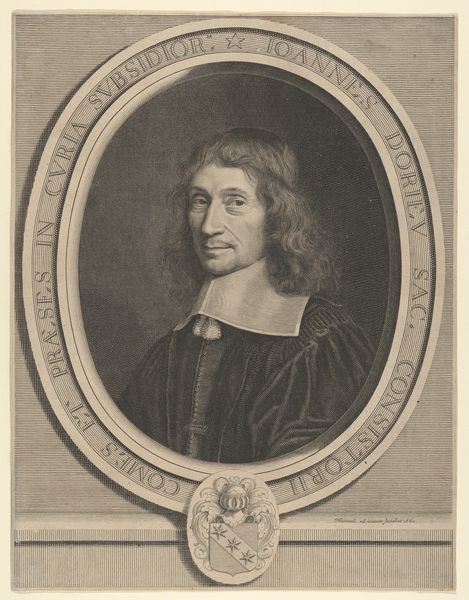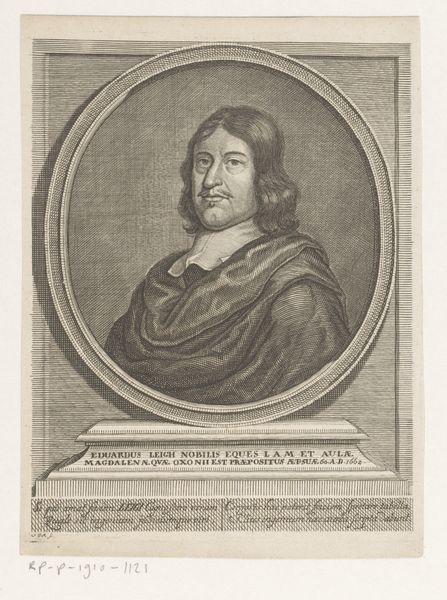
engraving
#
portrait
#
baroque
#
line
#
engraving
Dimensions: height 261 mm, width 188 mm
Copyright: Rijks Museum: Open Domain
Curator: We're standing before a portrait of Antoine le Maistre, an engraving dating between 1660 and 1715, part of the Rijksmuseum collection. Editor: The first thing that strikes me is the sheer precision of the lines. It almost feels photographic in its detail, capturing every nuance of his face and hair, and yet… Curator: …yet it’s resolutely Baroque in style. The oval frame, the inscription, the almost theatrical presentation of the sitter – all classic elements of the era. This format speaks to the political structures of patronage and nobility that so determined what, and who, was worthy of depiction. Editor: Definitely, but that's precisely where I see an inherent tension. Le Maistre, an avocat, presented with such attention to detail in an artistic expression so obviously for the social elite of the day, makes you wonder: how did social activism operate at the time, if that makes sense? Curator: The inscription does provide context. It identifies le Maistre and his passing, also referring to him as “l’appuy de l’Innocence,” hinting at his role and perhaps how he was publicly regarded. Consider the act of commemorating him like this in this format could have carried considerable political weight. Editor: That’s it! It’s almost as though, in this highly structured, politically-motivated artistic format, it's possible to identify and reify those upholding different values than those typically represented. It speaks to me of visibility and of those fighting on behalf of the underprivileged, almost saying "We see you, and value what you do". Curator: The choice of engraving itself is significant. While perhaps not as glamorous as oil painting, engraving allowed for wider dissemination. The artwork wasn't necessarily made to adorn someone's private chambers; there was, in principle, a wider viewing public for engraved portraits, shaping public opinion in the process. Editor: Absolutely, and I see the power of portraiture operating even within very defined boundaries. Even these portraits helped create discourse and helped promote particular social causes and ideologies to wider audiences. Curator: Exploring art through the lens of the social history in which they are embedded certainly can shift our understanding. Editor: And situating a historical object such as this print in light of contemporary activist theories reveals exciting intersections.
Comments
No comments
Be the first to comment and join the conversation on the ultimate creative platform.
